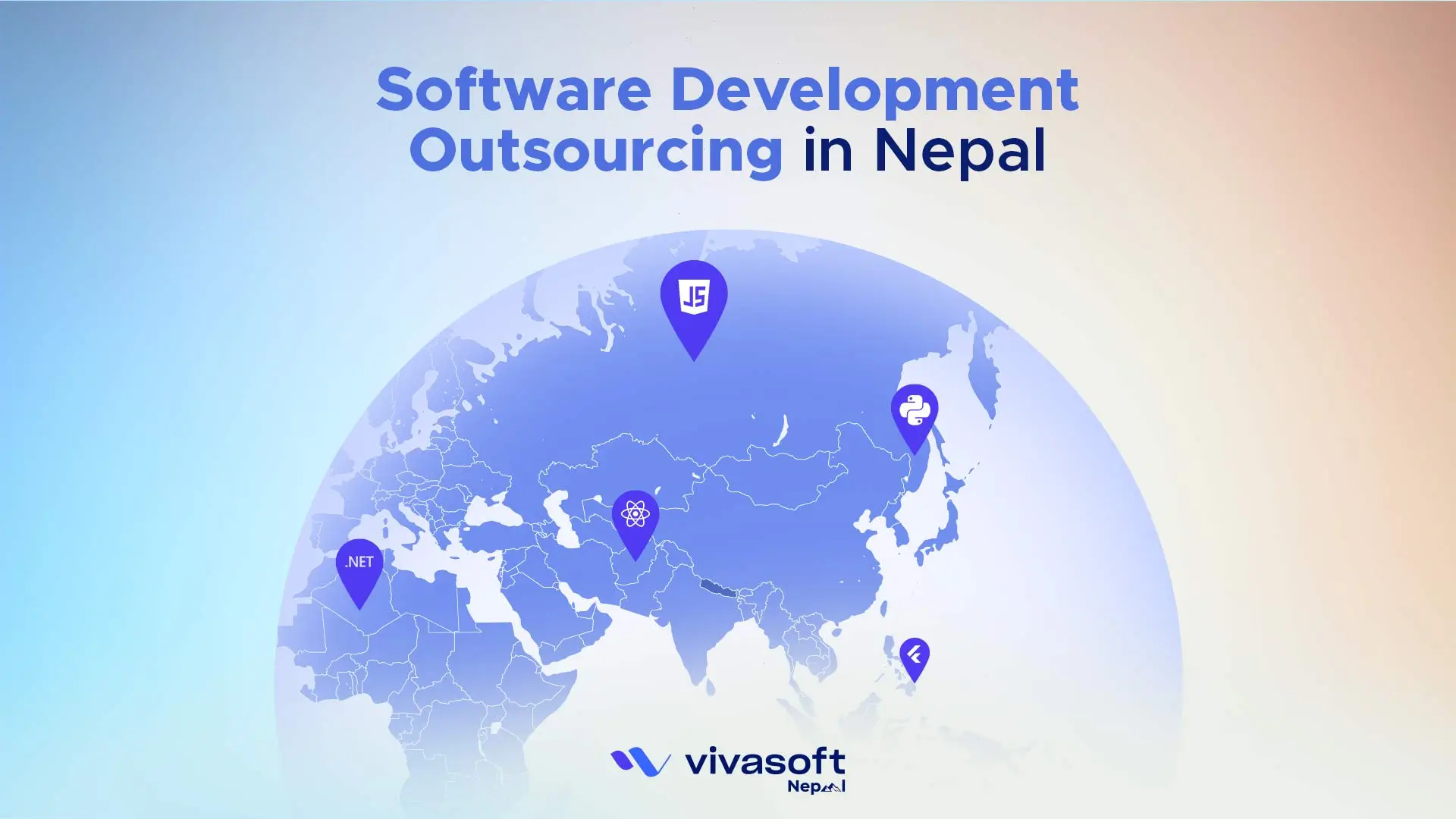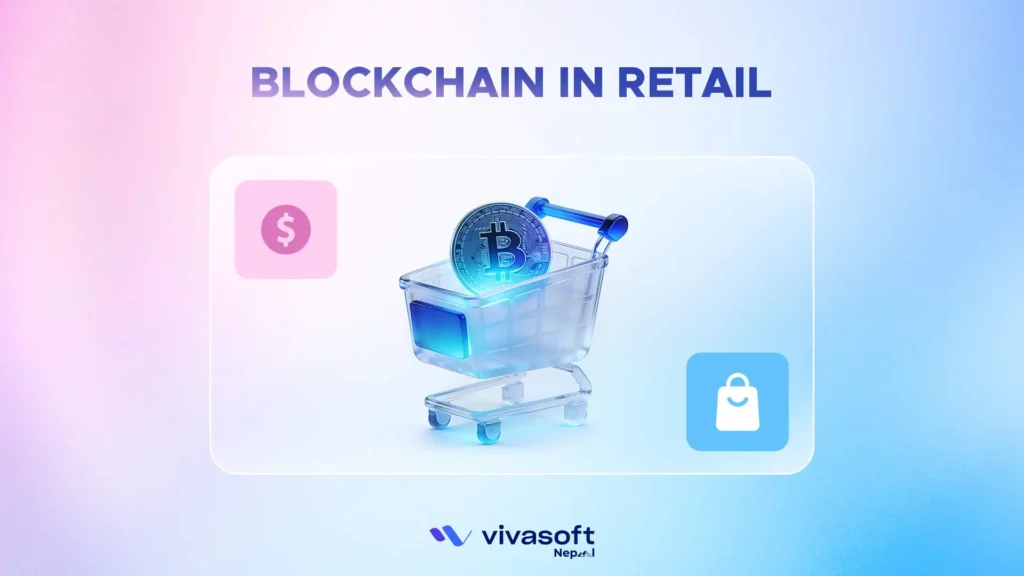With the rising need for quality and affordable IT solutions, software development outsourcing in Nepal has become a preferred option for many foreign countries. Its experienced IT personnel and low cost is the perfect solution for quality work.
However, the success of your outsourced software development mostly depends on the Nepali provider you choose.
Communication gaps or difficulty in knowing everything upfront can lead to unexpected results. That’s why you should choose the right one defining your goals and models. Communicate clearly with shortlisted companies about your budgets and finalize the contract.
What is Software Development Outsourcing?
Software development outsourcing means hiring external experts and handling all or part of your software projects. Here, instead of using only your in-house team, you work with a third party that provides the skills and resources you need.
Software development outsourcing offers you access to specialized talent. Moreover, you can get the project done at reduced costs and ensure faster development. Many businesses outsource software development so that they can focus on their core activities, whereas the experts take care of software needs efficiently.
Step by Step Guide to Outsourcing Software Development in Nepal
The reality is that software development outsourcing in Nepal gives you access to talented developers for less cost. But if you want to get the most out of it, you will need to follow a clear process.
Step 1: Define Your Project Requirements
First off, you need to define what you need and what the goal of your software is. It may include:
- What do you want to achieve?
- Who will use it?
- What problem will it solve?
- Who can do what within the system (Accessibility)?
- Whether there are integration needs or security requirements.
- Do you have any technology preferences?
It is better to make well-documented requirements to help the development team to understand your goals. Thus, they will be able to suggest the best options for your project. On top of that, it will allow you to ensure fewer chances of communication gaps or going over budget
Step 2: Choose the Right Outsourcing Model
Next, you have to consider which outsourcing model will be best for your project needs and strategic goals. In Nepal, most of the software development companies support the following types of outsourcing models.
Staff Augmentation Model
In the staff augmentation model, you hire external developers to work alongside your team. Here, the professionals usually work on specific skill gaps or enhance capacity. The hired developers follow your internal processes and report to your team directly.
Dedicated Team Model
In this model, an outsourcing vendor provides a full team that will be exclusively committed to your project for a defined term. They work independently. Still, they maintain the workflow and goals of your company.
Project Based Model
You hand over the entire software development process to an external vendor in the project-based model. The outsourcing company handles everything from start to finish. However, the model of complete IT outsourcing is less flexible.
Contract Based Model
Contract-based outsourcing models work on how the pricing and responsibilities are structured between you and the outsourcing company. There are mainly two types of contract-based models in Nepal.
- Fixed-Price Contract: Here, you agree on a fixed timeline and cost before the development begins. It is a suitable model for projects with clear requirements and few chances for change.
- Time and Materials (T&M) Contract: In the Time and Materials (T&M) Contract, the pricing is based on the actual time and resources used. It allows you flexibility in development, and you get control over the development process. It works well for projects where the scope may evolve.
Now let’s have a quick comparison between these models for a better overview.
| Model | Control and Flexibility | Pricing Structure | Best For |
|---|---|---|---|
| Staff Augmentation | High | Varies (hourly/daily) | Short-term scaling, filling skill gaps |
| Dedicated Team | Moderate | Fixed + Variable | Long-term projects, product development |
| Project-Based | Low | Fixed | Fixed-scope, short-term projects |
| Fixed-Price Contract | Low | Fixed | Projects with clear scope & timeline |
| Time & Materials | High | Based on usage | Agile, evolving, or experimental projects |
Step 3: Look for Potential Outsourcing Companies
Now it’s time to search for top best software development companies, as it directly affects the success of your project. The right partner brings the technical skills and experience that your project needs. You can start by making a list of the top software development companies.
You should choose and make a list of those companies that have a proven record of offering the best software development outsourcing solutions.
Step 4: Determine Your Budget and Timeline
Generally, your budget and timeline decide how big your outsourced project can be. So, you should first determine how much you want to invest and when you need it done. It will help the outsourcing companies to provide realistic proposals matching your expectations.
You can check out the pricing structure for software outsourcing in Nepal below to have an idea.
| Service | Cost Range (NPR) | Approx. USD Equivalent |
|---|---|---|
| Hourly Developer Rate | NPR 1,800/hour | $13.50-$15 |
| Entry-Level Developer Salary | NPR 20,000-40,000/ month | $150-$300 |
| Senior-Level Developer Salary | NPR 70,000 | $530 |
| Mobile App Development | NPR 910,000-2,025,000 | $7000-$15000 |
Step 5: Communicate & Finalize the Partnership
Now, you’ll need to have a detailed discussion about your project and its requirements with the companies you’ve shortlisted. Ask them about their pricing models, workflows, technology stacks, and possible timelines. In this context, both sides should have clearly defined roles and expectations of quality.
Additionally, you should determine how often you will receive updates during the project and communication protocols. It will allow you to track progress and address issues promptly.
Step 6: Sign the Contract and Get Started
Move ahead to sign the contract after you and the vendor agree on all terms. The contract should be clearly outlined with the following terms:
- The project scope
- Timelines
- Payment terms
- Confidentiality
- Intellectual property rights
Sign the contract and ensure to keep a copy of it for your records. Now you can get started with a kickoff meeting. At last, ensure regular monitoring during the project to keep everything on track.
What Are the Advantages of Software Development Outsourcing in Nepal?
Outsourcing software development to Nepal can be an ideal choice for global businesses today. The growing tech scene of the country is offering strong reasons to consider this as the best cost-effective option.
- Lower Development Costs: Nepal offers dramatically lower development rates compared to Western countries. Research has proven that companies can save 60–80% development costs through outsourcing in Nepal with no compromise of quality. These reduced development costs are particularly advantageous to companies that are looking to lower operating expenses and maximum ROI.
- Skilled IT Workforce: Nepal has a growing number of computer science and software engineering graduates and experts. On top of that, many also have hands-on experience with international projects. They are also skilled in popular programming languages like Python, JavaScript, C++, Java, Dart, PHP, C# and many more. Obviously, it makes them well-prepared to deliver quality software for global clients.
- Faster Time to Market: Outsourcing software development to Nepal helps you avoid the slow hiring process. You get access to ready-to-go teams who can start working right away. It speeds up your project development. As a result, your product reaches the market much faster than others.
- Expanding Tech Industry and Government Support: Nepal is actively growing its tech industry. According to experts, the IT outsourcing industry in Nepal will witness growth on the basis of a 10% CAGR between 2025 and 2030. Moreover, the government supports startups with business-friendly policies. These steps create a strong foundation for outsourcing.
- Time Zone Advantage: The UTC+5:45 time zone of Nepal allows for “follow-the-sun” workflows with Western clients. When your team is offline, Nepali developers keep the project moving. It ensures progress doesn’t stop at the end of the workday. As for companies in Southeast Asia, Nepal is only a few hours behind. So, it enables collaboration during the workday.
What Are the Disadvantages of Software Development Outsourcing in Nepal?
As you can see, outsourcing to Nepal has many benefits. However, it is important to be aware of some common challenges beforehand, because they can make or break your project.
- Communication challenges: Sometimes there might be communication gaps when you deal with offshore teams in Nepal. At times, language barriers can result in delays and miscommunications. In the end, it just might not be what you want.
- Challenges in project management: You can find it challenging to manage the offshore team remotely. It requires strong coordination when you want to outsource for software development. Lack of in-person supervision sometimes leads to quality issues.
- Data security: Because you have to send your company data to an outside team, there is a risk of data breaches. There could be loss of confidentiality even when the software development outsourcing company does not strictly maintain security protocols. So, it is important to always prefer a company with strong data protection policies.
How to Choose the Right Software Solution Provider in Nepal?
The success of the software development project through outsourcing in Nepal is mostly decided by the provider you choose. You should choose the right one following the factors that determine their expertise and reliability.
- Check references and portfolio: You should review past projects and client feedback clearly, as they show the experience of the provider. Through the client’s review, you can determine how reliable the team is.
- Technological stack and expertise: Next, ensure the provider uses modern tools and technologies that meet your project requirements. Moreover, you should choose a partner who has the expertise to handle the complexity and goals of your project.
- Pricing models and timeline: You need to make sure the company explains how they charge and how long the work will take. Thus, you will be able to avoid extra costs or delays later with a clear knowledge of it upfront.
- Flexibility and Scalability: You should choose a company that can adjust growing or changing requirements of your project. They should be able to add more developers or shift priorities as needed.
- Start with a small project: If you are not too sure, you can start with an MVP project to see how well they communicate and deliver work. Through this, you can be confident before giving them bigger software projects.
Conclusion
Outsourcing software development to Nepal offers you access to skilled developers and faster project delivery. Furthermore, you can save cost without losing quality. Opt for an experienced software development offshoring company such as Vivasoft Nepal for your projects to be successful.
Vivasoft Nepal combines technical excellence with flexible models to meet your project needs. Contact Vivasoft Nepal today to get started with an initial free consultation.
FAQs
What types of IT services are commonly outsourced to Nepali companies?
Nepali companies commonly outsource software development, web development, and mobile app development. Their IT service also includes UI/UX design and data analytics.
Why might a company choose to outsource software development?
A company could outsource software dev as a way to cut costs or to reach expertise. Moreover, businesses can speed up project completion time by incorporating round the clock working schedules.
Why is software development outsourcing increasing?
The trend of software development outsourcing increases because you can complete a project sooner from global talent and experienced team members at an affordable price rate.
Why do companies prefer global sourcing over local sourcing?
Local sourcing offers faster communication and easier collaboration. But it tends to be costlier and provide fewer talent options. On the other hand, global sourcing offers cost savings and access to specialized skills worldwide.













